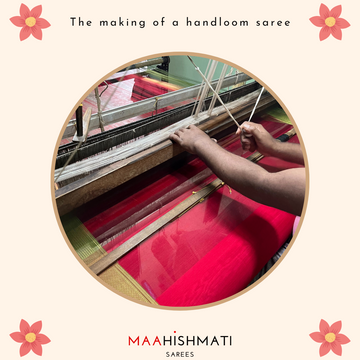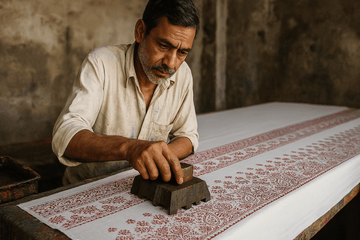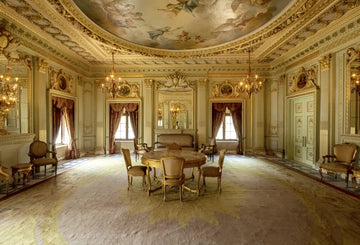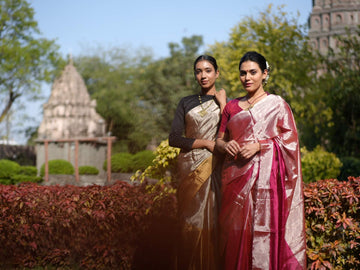Maheshwari and Chanderi Handloom Sarees: A Journey Through Time, Threads, and Traditions
by Rahul Patwa on Jan 27, 2024

Embarking on a journey through the heartland of handloom sarees, my 3+ years of extensive travel in Maheshwari and Chanderi have been nothing short of a tapestry of colors, textures, and stories. In this blog post, I aim to share the rich experiences and profound insights gained from witnessing the meticulous handloom saree weaving process, delving into the origins, designs, weavers' stories, impact on the local economy, and the captivating folklore that surrounds these timeless fabrics.
1. The Origin Stories
Both Maheshwari and Chanderi handloom sarees have roots deeply embedded in the cultural history of India. Maheshwari sarees, believed to have been first woven in the 18th century by Maa Ahilya Bai Holkar for royal guests, carry the essence of Maheshwar, a town on the banks of the Narmada River. Chanderi sarees, on the other hand, boast a history dating back to the Vedic period, with mentions in ancient texts like the Mahabharata. Understanding the historical context has added layers of appreciation for these exquisite handlooms.
2. The Weaving Process
One cannot fully grasp the beauty of Maheshwari and Chanderi handloom sarees without witnessing the intricate weaving process. From selecting the finest silk and cotton threads to hand-dyeing them using traditional methods, and finally, the deft hands of the weavers at work, every step is a symphony of skill and dedication. The shuttle moving gracefully through the loom, creating timeless patterns, is a dance that connects the weaver with centuries of tradition.
3. Meeting the Weavers
The heart of every handloom saree is the weaver, whose skill and passion breathe life into the fabric. I've had the privilege of sitting with these master craftsmen and women, hearing their stories of inherited artistry, struggles, and triumphs. The personal connections forged during these encounters have made each Maheshwari and Chanderi saree a testament to the human spirit and the resilience of traditional crafts in a rapidly changing world.
4. Impact on Local Economy
The handloom industry is not just about art; it's a lifeline for many communities. Exploring the weaving clusters in Maheshwar and Chanderi, I witnessed how the handloom tradition sustains families, providing employment and fostering a sense of community pride. The economic impact of purchasing handloom sarees goes beyond owning a beautiful piece; it contributes to the well-being of an entire ecosystem.
5. Designs and Motifs
Each Maheshwari and Chanderi saree tells a unique story through its designs and motifs. From the vibrant peacocks of Chanderi to the delicate zari work of Maheshwari, every pattern has a cultural significance. Unraveling the meanings behind these designs has added a layer of depth to my appreciation for these handcrafted masterpieces.
6. Folklore and Traditions
The lore surrounding Maheshwari and Chanderi handloom sarees is as enchanting as the fabrics themselves. Stories of royal patronage, whispered secrets of ancient designs, and the mystical significance of certain motifs have added a magical quality to my journey. Learning about the myths and legends associated with these sarees has made the experience truly immersive.
Conclusion:
As I weave together the threads of my experiences, the journey through Maheshwari and Chanderi handloom sarees emerges as a tale of passion, tradition, and the timeless artistry of human hands. The vibrant stories embedded in every thread, the dance of the loom, and the unwavering spirit of the weavers have left an indelible mark on my soul. May this blog post serve as a tribute to the living legacy of Maheshwari and Chanderi handloom sarees, a celebration of a craft that continues to enchant and inspire.
Rahul Patwa,
Founder, Maahishmati Sarees





